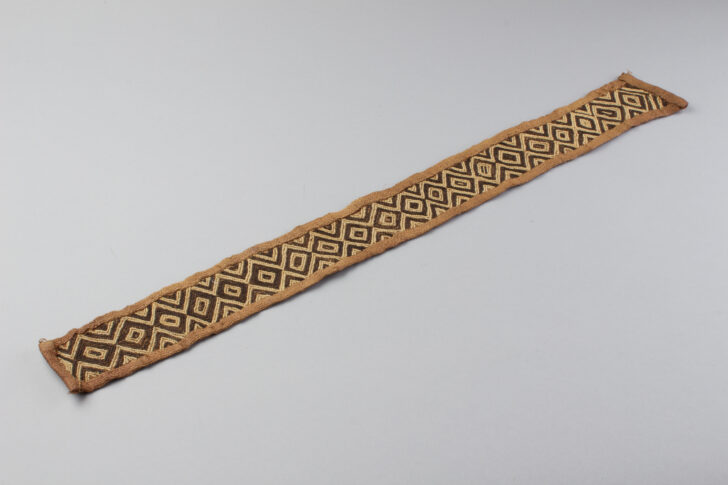Raffia Textile Panel
Kuba

Description
Subject Matter:
The Kuba peoples are renowned for their elaborate, geometrical surface design, such as applied to this cloth. Also referred to as cut pile, raffia cloth, Shoowa textile or Kasai velvet (Velours du Kaisai), Kuba cloth is often made from barkcloth: a felt fabric, typically not associated with being a textile because it is not woven. Their plush “velvet” texture is achieved through the cut pile technique, where a sharp knife is used to gently clip off the tufts of the palm thread.
In the 19th century, decorated raffia cloth was used as a marker of prestige, as currency, to pay tribute, settle legal disputes, and in public displays such as the funerals of high-ranking titleholders. Additionally, they were often used as initiation objects during ceremonial rites of passage. Though barkcloth is the typical fabric, more recently industrial cloth has been used as a replacement.
The textiles are generally covered with geometric patterns, similar to patterns found on Kuba basketry, woodwork, sculpture, and female body scarifications. Patterns may be given names, but the same pattern will likely be given a different name by different people.
The diamond pattern in this cloth is created through a repetitive crossing of lines or, in this case, chevrons semetrically opposed to one another. A double crossing can possibly be considered a reference to Woot, the mythical founder of the Kuba, whose mother invented mat weaving.
References:
Monni Adams, Kuba Embroidered Cloth, African Arts, 1978
Daniel Biebuyck, The Arts of Zaire, 1985
Georges Meurant, African Textiles from the Kingdom of Kuba, 1986
Roy Sieber, African Textiles and Decorative Arts, 1972
Physical Description:
Rectangular panel with tan hemmed edges, consisting of a brown diamond pattern outlined in beige chevrons that are repreated horizontally across the panel.
Usage Rights:
If you are interested in using an image for a publication, please visit https://umma.umich.edu/request-image/ for more information and to fill out the online Image Rights and Reproductions Request Form.